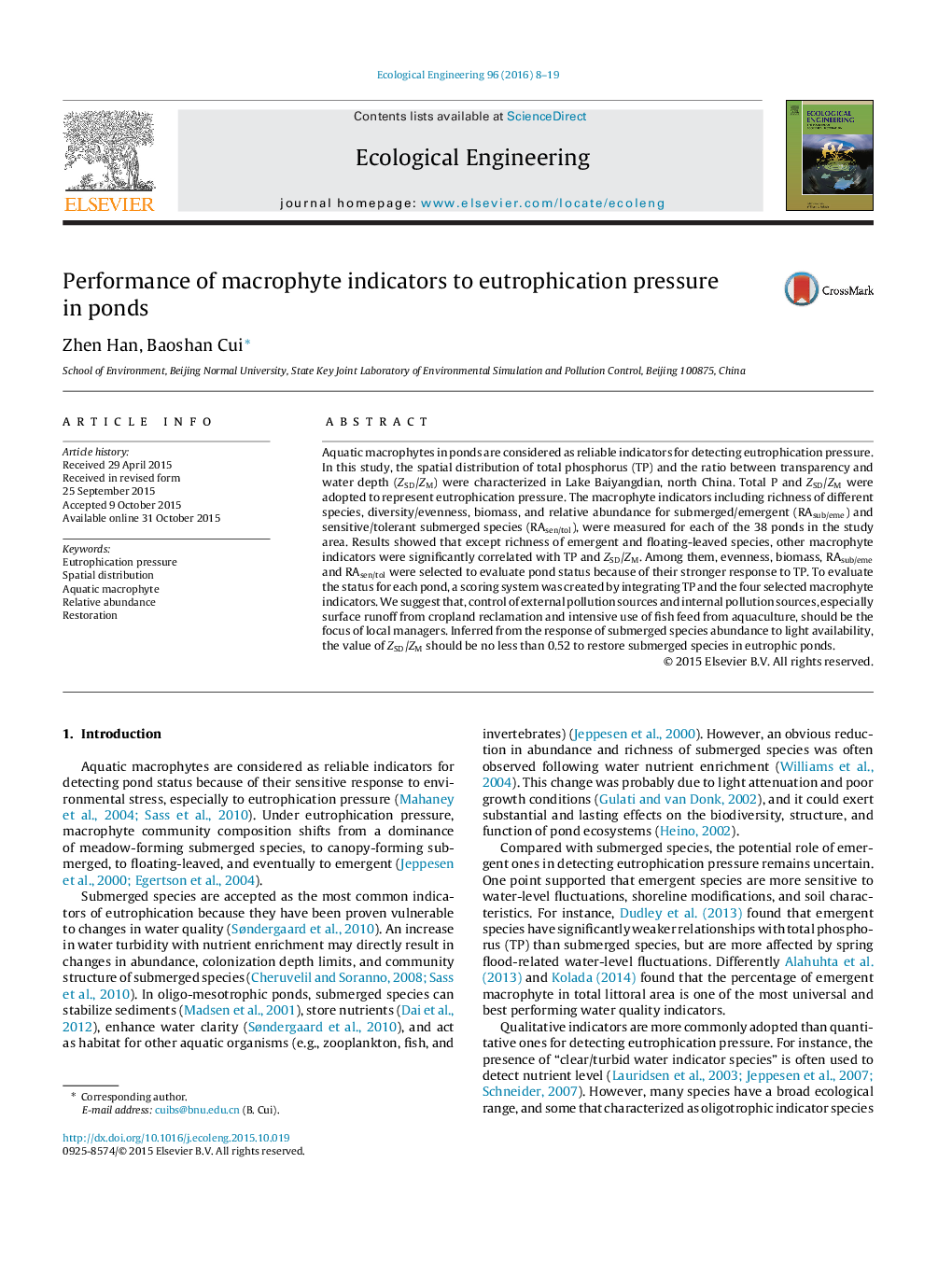| Article ID | Journal | Published Year | Pages | File Type |
|---|---|---|---|---|
| 5744082 | Ecological Engineering | 2016 | 12 Pages |
â¢Eutrophication pressure was geographically structured.â¢Total richness showed a significant unimodal response to eutrophication pressure.â¢Diversity and evenness index were negatively related to eutrophication pressure.â¢Replacement of submerged with emergent was revealed along eutrophication gradient.â¢Transparency threshold for restoring submerged species was given.
Aquatic macrophytes in ponds are considered as reliable indicators for detecting eutrophication pressure. In this study, the spatial distribution of total phosphorus (TP) and the ratio between transparency and water depth (ZSD/ZM) were characterized in Lake Baiyangdian, north China. Total P and ZSD/ZM were adopted to represent eutrophication pressure. The macrophyte indicators including richness of different species, diversity/evenness, biomass, and relative abundance for submerged/emergent (RAsub/eme) and sensitive/tolerant submerged species (RAsen/tol), were measured for each of the 38 ponds in the study area. Results showed that except richness of emergent and floating-leaved species, other macrophyte indicators were significantly correlated with TP and ZSD/ZM. Among them, evenness, biomass, RAsub/eme and RAsen/tol were selected to evaluate pond status because of their stronger response to TP. To evaluate the status for each pond, a scoring system was created by integrating TP and the four selected macrophyte indicators. We suggest that, control of external pollution sources and internal pollution sources, especially surface runoff from cropland reclamation and intensive use of fish feed from aquaculture, should be the focus of local managers. Inferred from the response of submerged species abundance to light availability, the value of ZSD/ZM should be no less than 0.52 to restore submerged species in eutrophic ponds.
